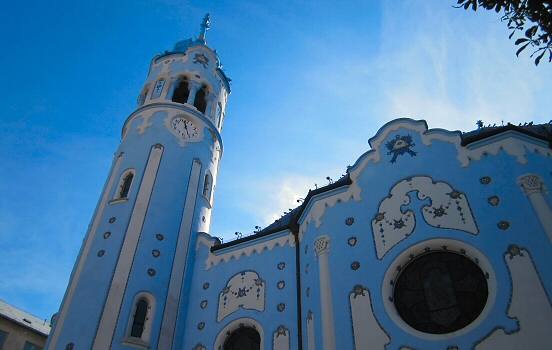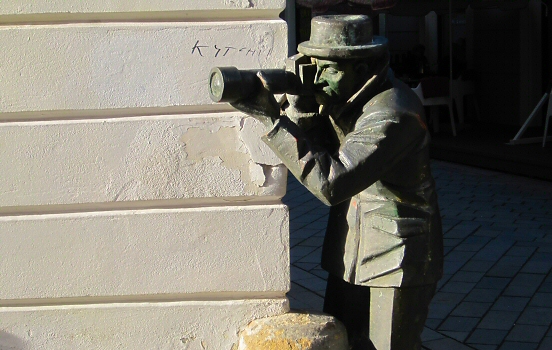When the kids in the movie “Eurotrip” arrived in Bratislava, they frightfully whispered “Dear sweet mother of god, we’re in eastern Europe”. Well, I’m in Bratislava today and for the record, it’s nothing like the that scene. No angry dogs, severed hands or dodgy characters. Yet.
Of course, I knew that. But I had to look to be sure. Just like that semi-crazy dolphin man in Le Grand Bleu.
For some reason, Bratislava seems to be a popular choice when movie makers need to depict a derelict town in eastern Europe. From the rough portrayal in “Eurotrip” to the horrors in “Hostel” (which actually was the village Cesky Krumlov in Czechia), the name Bratislava seems to bring out the worst nightmares from the audience. Perhaps this has placed a dubious image in people’s minds, since there are not that many tourists around, and I seldom hear of people visiting.
 Modrý kostolík – the blue church.
Modrý kostolík – the blue church.
Bratislava isn’t the kind of place that puts on a show. It just stands there, quietly brooding on the banks of the Danube. A strange cocktail of faded grandeur, post-Soviet hangover and sudden EU polish. Sure, the Old Town is full of charming cobblestones and crooked alleyways. It’s older than your country, tougher than your Wi-Fi and cooler than it lets on.
But when you look behind the fresh coat of paint, the depressive concrete blocks in gray resist any forces of gentrification. The weight of the Iron Curtain and old-school Czechoslovakia can still be felt in several places, as that kind of heaviness doesn’t leave easily. The streets are a jumble of clashing realities. American fast food signs line up next to crumbling Soviet housing blocks. Locals rush past with the thousand-yard stare of people who’ve seen a system collapse and another one rise in its place, not entirely convinced by either.
The castle looms above it all like a sentry that’s seen too much. From up there, I can see the city unfurl. A mix of Baroque ambition and Brutalist spite. Next to the river is the UFO-shaped bridge, a flying saucer crash-landed from some Cold War fever dream.
 Paparazzi statue.
Paparazzi statue.
There’s a rawness to Bratislava. A bite in the air, in the food, in the language. There’s history here that still tastes fresh. And yet, the city breathes.
Related posts

2 comments
Leave a reply